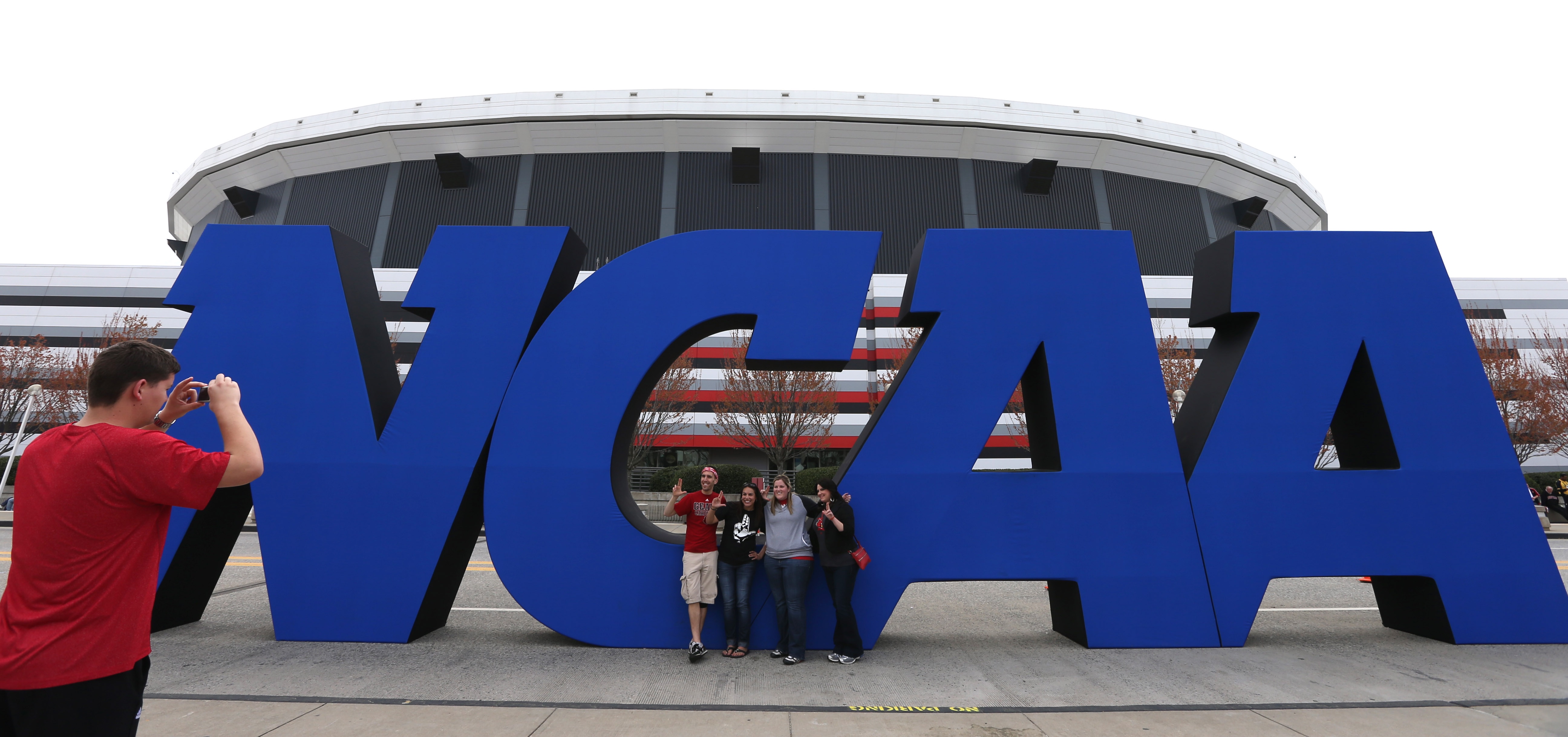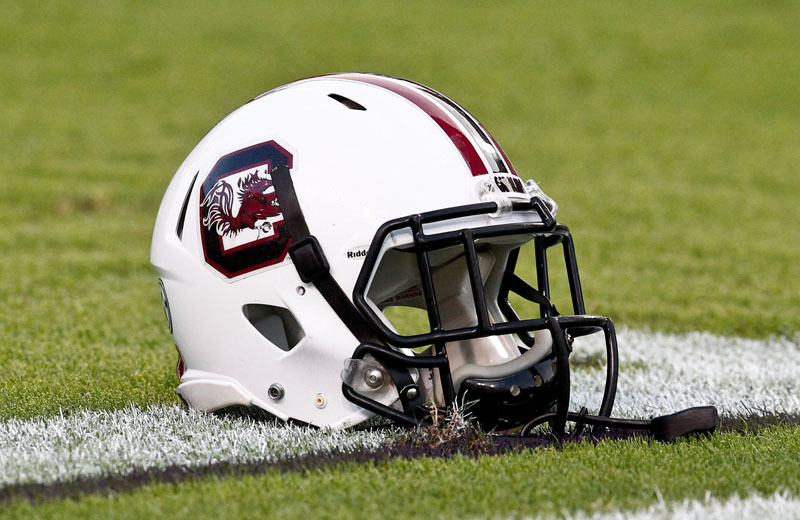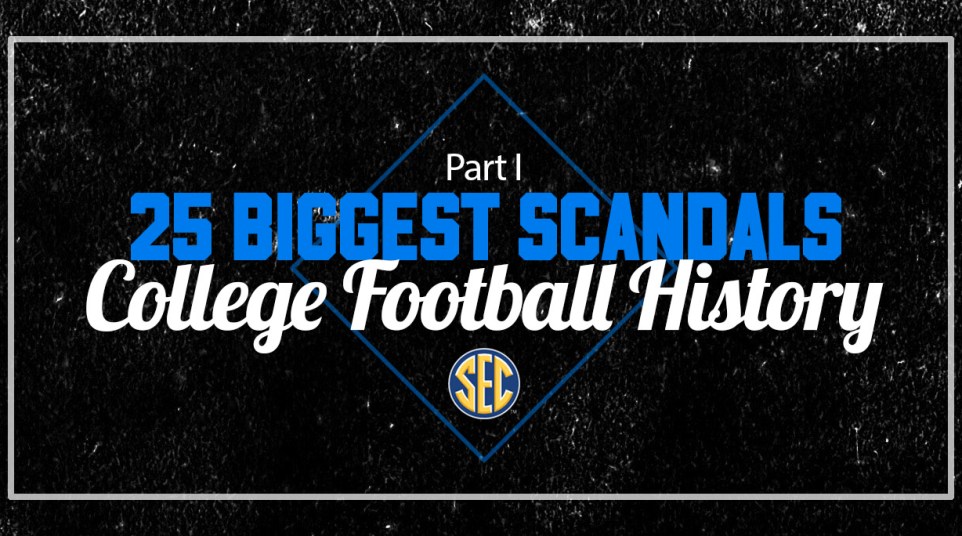Part I: Top 25 scandals in college football history
Baseball may be “America’s favorite pastime,” but football has brought out more passion among its fans for some time.
Perhaps because of the emotional ties that come with rooting for one’s alma mater, college football creates an even deeper passion. With passion comes fan and media interest, money and power.
A new scandal involving a college football player or program pops up nearly every month. Because we live in an age of social media, those scandals often blow up to become major sports news stories.
“It seems like there’s so much more potential with football for this kind of stuff,” said Jeremy Henderson, the co-host of the Rich and Jeremy in the Morning radio show and editor of The War Eagle Reader. “There’s more that’s compelling and interesting in a football context. I mean, are there college baseball scandals?”
There are scandals across the sports world, from the Olympics to Major League Baseball, and plenty in other college sports. But trouble does seem to be most prevalent in college football.
Let’s not forget that young men, often 18 to 22 years old, play college football. Young men dumb things from time to time, such as firing a BB gun at squirrels, walking out of a supermarket without paying for crab legs, or jumping on a table at the student union and screaming obscenities, like a certain Heisman Trophy-winning quarterback.
Players have done (or have been accused of doing) things that are far worse, often creating a media firestorm.
Because there is such a wide range of possibilities – and the word “scandal” itself is open to interpretation – ranking the top 25 scandals in college football history is difficult. There are sensitive issues involved that have impacted the lives of many people, so it’s not easy to say a pay-for-play scheme is worse than a murder, that a player receiving improper benefits is a bigger story than academic fraud, or that one case of sexual assault is more important than any other.
Therefore, our list is a mixture of individual events – the death penalty at SMU and the Penn State child abuse scandal — as well as larger-picture discussions that touch on related topics like gambling, sports memorabilia and the ongoing sexual assault epidemic, organized in what is hopefully a logical order.
And though scandals are nothing new in college football – think back to academic fraud at Army or Wally Butts and Bear Bryant vs. the Saturday Evening Post — our list is weighted toward the most recent, as media coverage has become more saturated.
We’ve identified and ranked the top 25 scandals in college football history. We’ll deliver them to you in three parts, beginning with the invention and development of the game itself.
25. The Birth of College Football Itself
The first scandal in college football history was the creation of the game we now know and love.
Students taking time away from their studies to beat the hell out of one another on the campus quad was one thing (and often frowned upon by faculty), but in the late 19th century, university decision-makers thought it ludicrous to allow students to travel hundreds of miles to play representatives of other academic institutions.
The Ivy League wasn’t officially established until 1954, but many of the schools now in the conference – Princeton, Yale and Harvard in particular – made a huge impact on creating the game of football we enjoy today. In fact, Harvard and Yale created intercollegiate sports when the two crews met for a boat race on Lake Winnipesaukee in 1852.
While different versions were popular on campuses across the northeast, Princeton (then known as the College of New Jersey) met Rutgers in 1869 for the first intercollegiate football game. The sport itself looked very different at the onset, though Harvard later pushed for a rugby-style game instead of the more soccer-like match Princeton and Rutgers had played. Yale man Walter Camp helped to develop and unify the rules in the late 19th and early 20th centuries.
The early years of the game were quite lawless. Without a true governing body in the days prior to the establishment of the NCAA, there were no eligibility standards. In the late 1800s, it was common for players to take the field for six or seven years, regardless of whether they were actually enrolled at a university. School faculty often regarded the perceived importance of the game with suspicion.
When discussing a potential football game between his students and the University of Michigan to be held in Cleveland in 1874, Cornell president Andrew D. White famously said, “I refuse to let 40 of our boys travel 400 miles merely to agitate a bag of wind.”
Cornell wouldn’t join its future Ivy League rivals in fielding a football team until 1887.
24. Violence Nearly causes football Ban
In the early days of football, vague rules and practically nonexistent safety equipment made the game brutal – even deadly. Players suffered traumatic brain injuries as they were subjected to a variety of punches, kicks and other unsportsmanlike acts during attempted tackles or while lying on the bottom of piles. Violent in-game tactics such as the flying wedge added to injury reports.
Not unlike today, the media was at the heart of the controversy. According to the Chicago Tribune, 18 men died playing football in 1904 and 159 suffered serious injuries playing the game. The paper claimed 19 players died the following year, with an additional 137 suffering serious injury. Football and its brutality became a hot topic for newspaper editorials.
President Theodore Roosevelt – a football fan whose son played on the Harvard freshman team — stepped in and urged football rules makers, and Harvard president Charles W. Eliot in particular, to adopt sweeping changes or be outlawed. Prior to the 1906 season, representatives from several schools met in an attempt to follow the president’s advice and save the game.

Though it took several years – and many more rules changes – to curb the death toll, the group saved football and the rules meetings helped give rise to the NCAA.
23. Death at Notre Dame
More than a century later, death remains part of college football. However, one death involving a Notre Dame student was far different than those that plagued the game’s early days.
College football teams rely heavily on practice video as a teaching tool and as a result, employ video staffers, often students, to film practices. In order to get the best vantage point, many videographers climb high in hydraulic lifts.
In 2010, on a particularly gusty day in South Bend, Ind. (up to 50 miles an hour according to reports), 20-year old Notre Dame student and video department member Declan Sullivan was filming practice from a lift 39 feet in the air when it toppled. Sullivan, who shared concerns about filming that day with a Notre Dame athletic department staff member, also took to Twitter less than an hour before the fall to describe the scene as “terrifying.” After he fell, Sullivan was taken to a hospital and later died.
In the aftermath, head coach Brian Kelly and athletic director Jack Swarbrick came under heavy fire from critics and the media. Notre Dame launched an internal investigation into the tragic incident, and OSHA fined the school $77,500.
22. Manti T’eo and Lennay Kekua
Two years later, yet another death impacted the Notre Dame football program. Except it wasn’t actually a real death, or a real person.

Star linebacker Manti T’eo signed with Notre Dame as a five-star recruit out of Hawaii in ’09. He became an immediate star in South Bend. Yet he returned to school as a senior, becoming a Heisman Trophy candidate and sweeping the major defensive player of the year awards. The Fighting Irish completed an undefeated regular season and earned a spot in the BCS National Championship Game.
Much of the inspiration T’eo relied upon during his senior year came from the death of his girlfriend, Lennay Kekua, which he said occurred just hours following the loss of his grandmother, Annette Santiago, in September.
However, the hazy details of Kekua’s “life” and “death” began to unravel over the following months. Deadspin published a bombshell piece about the hoax in January 2013. Facts came to light that T’eo never actually met Kekua, that they had only spoken on the phone, and that T’eo had been duped into believing a man named Ronaiah Tuiasosopo was actually Kekua.
The “catfish” was one of the most talked-about college football stories of all-time, and one of the most embarrassing for the college football star involved.
21. Oklahoma State, Orange Pride and Sports Illustrated
When college football grew into a national passion, investigative journalists began eyeing the game.

Sports media has evolved into an all-day, year-round business, leading to more extensive coverage than we’ve ever seen.
As a result, we’re seeing more stories like this: In September 2013, Sports Illustrated published a five-part series that investigated the Oklahoma State football program.
SI made serious claims against the Cowboys for events that allegedly took place from 2001-11.
In interviews with former players, SI reported NCAA rules violations ranging from improper payments, fake jobs, a drug testing policy it did not adhere to — and enticing recruits with sexual favors tied to an all-female hosting group named Orange Pride.
The NCAA launched an investigation, finding some of the allegations to be overblown or unfounded.
Therefore, Oklahoma State received a relative slap on the wrist — probation until ’16, an $8,500 fine and the disbanding of the Orange Pride program for five years.
20. Miami Pell Grant Scandal
Of all things, Pell Grant fraud brought down the bad-boy Miami Hurricanes dynasty of the ’80s and early ’90s.
A ’95 federal investigation found that as many as 65 Miami student-athletes acquired more than $400,000 in financial aid through falsified Pell Grant applications. The fraud came to light when Dennis Erickson was head coach and centered on university employee Tony Russell.
An NCAA probe uncovered cash payouts related to in-game bounties, and the organization slapped the Canes with “lack of institutional control.” The NCAA banned Miami from the ’95 postseason and took away 31 combined scholarships from 1996-98. The punishment hit hard as Miami slumped to 5-6 in ’97, the first losing season for the program in 18 years. The season included an embarrassing 47-0 loss to rival Florida State.
Head coach Butch Davis led Miami back to national prominence and handed the program off to Larry Coker, who guided the Hurricanes to a national championship in ’01. Despite the good work Davis did in Coral Gables, he suffered through another major scandal later in his career at North Carolina.
19. “Free Shoes University Universities”
Former Florida head coach Steve Spurrier, one of the most quotable in the profession, gave a memorable quip about FSU standing for “Free Shoes University.”

The Seminoles won the first national championship in program history in 1993. The same year, several players received about $6,000 worth of shoes and clothing from a Las Vegas businessman and an unregistered sports agent at a Tallahassee Foot Locker, as well as various other cash gifts and improper benefits.
The University of Wisconsin also suffered through a free shoes scandal. In 2000, the school suspended 26 football players and required 21 others to perform community service for receiving improper discounts and credits at a Wisconsin shoe store. An investigation into the incident found evidence of similar arrangements for Badgers athletes in several sports dating back to 1993.
18. Gambling and Point Shaving
Free shoes and even small amounts of money can tempt college football players.
In the mid-2000s, six students athletes at the University of Toledo, including three football players, were among those charged with “conspiracy to commit sports bribery” in a U.S. District Court.
According to reports, the football players involved received as little as $500 to $1,000 for their involvement in a gambling and point-shaving scheme. In 2015, Adam Cuomo, Quinton Broussard and Harvey McDougle Jr. received probation for their involvement.
The Toledo case was far from the only one involving gambling by college football players. In 1996, Boston College suspended 13 football players for gambling on pro and college sporting events, including two that bet against the Eagles in a game against Syracuse. A basketball point-shaving scandal also rocked BC in 1978-79, leading to a 10-year prison sentence for former player Rick Kuhn.
17. “The Nightmare of Steroids” at South Carolina
In October 1988, Sports Illustrated published an exposé written by former South Carolina defensive lineman Tommy Chaikin entitled “The Nightmare of Steroids.” Chaikin wrote at length about his personal experience using anabolic steroids and with depression, and also claimed 50 to 100 Gamecocks that suited up for the football team from 1984-87 used steroids, though he later admitted his estimates weren’t completely accurate.

Chaikin also claimed that coaches either encouraged athletes to use steroids, or looked the other way when they did. As a result, Chaikin was often cast as a traitor to his program and was on the receiving end of several threats by fans. At the very least, many fans wondered why Chaikin exposed his experiences.
“It was to show that college football has become a joke,” he said, according to Sally Jenkins of the Washington Post. “A freak show.”
Said athletic director King Dixon in 1989: “That article was like a 2,000-pound bomb going off. It was devastating to South Carolina. It’s tainted us, it’s had a tremendous adverse effect as far as what other people think of us. We’re still trying to assess the damage. We’ve had intense negative publicity. There’s been a full-fledged investigation of allegations that are still unfounded. And we’ve gotten a clean bill of health.”
Though the NCAA did not punish the university, a grand jury indicted four South Carolina coaches for distributing the drugs to Chaikin and three other players. Three coaches pleaded guilty while the other was acquitted.
16. Todd Gurley, Johnny Manziel and memorabilia
NCAA Bylaw 12.5.2.1 states: “After becoming a student-athlete, an individual shall not be eligible for participation in intercollegiate athletics if the individual: (a) Accepts any remuneration for or permits the use of his or her name or picture to advertise, recommend or promote directly the sale or use of a commercial product or service of any kind; or (b) Receives remuneration for endorsing a commercial product or service through the individual’s use of such product or service.”
The rule is intended to prevent program boosters from paying big bucks to athletes.

It has come under fire during the debate as to whether or not top-flight football players (that help FBS universities make millions of dollars) should be compensated.
The rule was also at the center of the litigation tied to the EA Sports NCAA Football video game series, which was discontinued in ’13.
Georgia and the NCAA suspended Heisman Trophy candidate Todd Gurley four games in ’14 for receiving at least $3,000 in exchange for signing autographs. Because of Gurley’s stature as one of the country’s best players, the story became huge news and a topic of debate.
The Gurley situation followed a similar incident in which former Texas A&M quarterback Johnny Manziel was suspended for the first half of the 2013 season opener – a far shorter sentence because there was no proof that money had changed hands between memorabilia dealers and Manziel.
Gurley’s scandal came four years after another star player for the Bulldogs, A.J. Green, incurred a four-game suspension for selling a game-worn jersey to an agent.
Editor’s note: Check SaturdayDownSouth.com on Thursday for Part II of the 25 biggest scandals in college football history.

